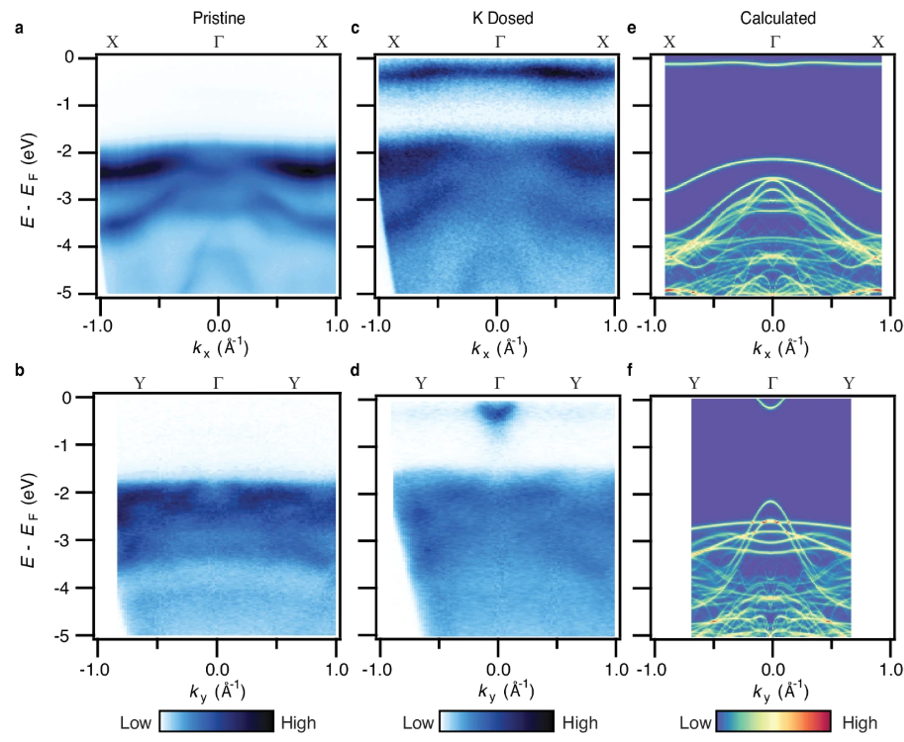 What Has Been Achieved: Excitons, bound electron-hole pairs, influence the optical properties in strongly interacting solid-state systems and are typically most stable and pronounced in monolayer materials. Bulk systems with large exciton binding energies, on the other hand, are rare and the mechanisms driving their stability are still relatively unexplored. Here, we report an exceptionally large exciton binding energy in single crystals of the bulk van der Waals antiferromagnet CrSBr. Utilizing state-of-the-art angle-resolved photoemission spectroscopy and self-consistent ab-initio GW calculations, we present direct spectroscopic evidence supporting electronic localization and weak dielectric screening as mechanisms contributing to the amplified exciton binding energy. Furthermore, we report that surface doping enables broad tunability of the band gap offering promise for engineering of the optical and electronic properties.
What Has Been Achieved: Excitons, bound electron-hole pairs, influence the optical properties in strongly interacting solid-state systems and are typically most stable and pronounced in monolayer materials. Bulk systems with large exciton binding energies, on the other hand, are rare and the mechanisms driving their stability are still relatively unexplored. Here, we report an exceptionally large exciton binding energy in single crystals of the bulk van der Waals antiferromagnet CrSBr. Utilizing state-of-the-art angle-resolved photoemission spectroscopy and self-consistent ab-initio GW calculations, we present direct spectroscopic evidence supporting electronic localization and weak dielectric screening as mechanisms contributing to the amplified exciton binding energy. Furthermore, we report that surface doping enables broad tunability of the band gap offering promise for engineering of the optical and electronic properties.
Importance of the Achievement: Tunability of the band gap offering promise for engineering of the optical and electronic properties. Our results indicate that CrSBr is a promising material for the study of the role of anisotropy in strongly interacting bulk systems and for the development of exciton-based optoelectronics.
How is the achievement related to the IRG, and how does it help it achieve its goals? This work represents a collaboration among three different MRSEC groups. Specifically, through this project, we established an effective collaborative workflow integrating angle-resolved photoemission spectroscopy experimental results with ab-initio calculations to enhance our understanding of materials.
Where the findings are published: This work is published Nat. Commun. 16, 1134 (2025) DOI: 10.1038/s41467-025-56457-x